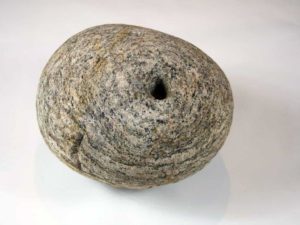How a retired Schoolteacher discovered an historic Scottish Artifact in her Garden.

The Glenfinnan Stone is a 12-inch wide boulder with a partially drilled hole through it, and it has a rich history in Scotland. It was originally used to support the Standard of Prince Charles Edward Stuart during the 1745 Jacobite Rising, which marked the start of a bloody uprising in Scotland. For many years, the stone remained in its original location near the Glenfinnan Monument on the shores of Lock Shiel. However, in 1989, the stone mysteriously disappeared and was not seen for two decades.
The story of the Glenfinnan Stone begins in the 18th century, when Prince Charles Edward Stuart raised his standard in Glenfinnan in August 1745, signaling the start of the Jacobite Rising. The stone was used as a support for the standard, and Prince Charlie secured a 16ft staff in the stone. This act marked the beginning of a pivotal moment in Scotland’s history and the fight for independence.
Fast forward to 2009, and the Glenfinnan Stone was discovered in a rockery in Hartlepool, England. The stone was discovered by retired schoolteacher Connie Lofthouse, who recognised it from a story she saw on the BBC’s Countryfile programme. Mrs Lofthouse had received the stone as a present while living in Scotland in 1990, and she brought it with her when she returned to England two years later. She gave the stone to her son to keep in his garden in Marine Crescent, Hartlepool.
Mrs Lofthouse’s discovery of the Glenfinnan Stone was a significant moment in Scotland’s history. The stone had been missing for 20 years, and its discovery was a cause for celebration among those who are passionate about preserving Scotland’s rich cultural heritage. Scottish historian Iain Thornber, who collected the stone, says that it serves as a symbol of Scotland’s rich history and fight for independence.
The Glenfinnan Stone is now in the care of the West Highland Museum in Fort William, where it is being preserved for future generations. The museum is dedicated to preserving the cultural heritage of Scotland and is the perfect place for the Glenfinnan Stone to call home. Iain Thornber, a fellow of the Society of Antiquaries of London and Scotland, says that the stone is a significant part of Scotland’s history and that it is important to keep it safe and protected.
The Glenfinnan Stone is not only a significant part of Scotland’s history, but it is also a testament to the importance of preserving cultural heritage. The story of its disappearance and discovery serves as a reminder of the ongoing efforts to protect and honour Scotland’s past. Scotland is rich in cultural heritage, and it is essential that this heritage is preserved for future generations. The Glenfinnan Stone is a symbol of Scotland’s rich history and fight for independence, and it is a reminder of the importance of preserving cultural heritage.